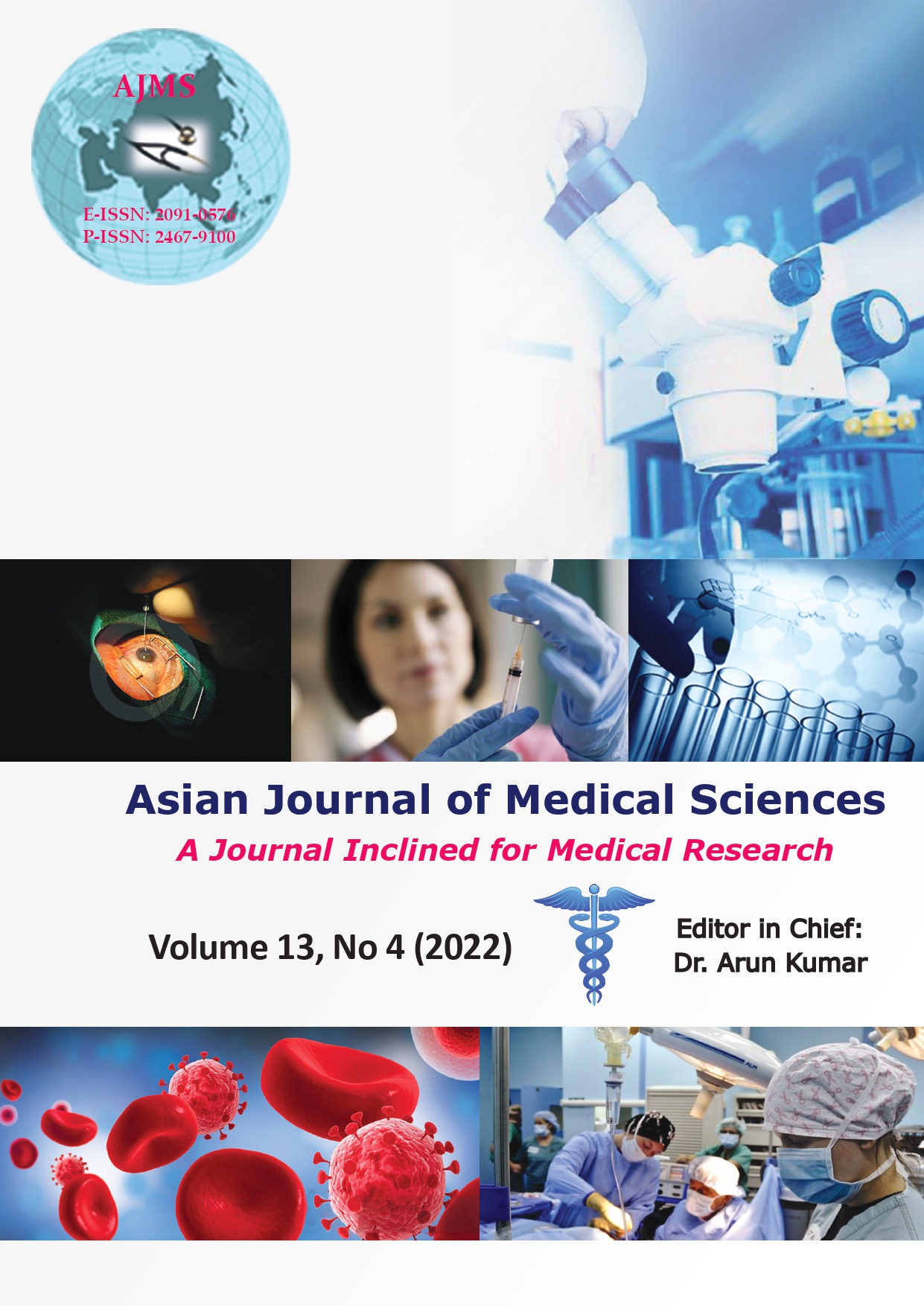Quality of life and economic burden in patients with dermatophytosis in a tertiary level hospital of Kathmandu, Nepal
Keywords:
Dermatophytosis, Economic burden, Tinea, Quality of lifeAbstract
Background: Dermatophytosis is the infection of keratinized tissue (skin, hair, and nail) caused by various species of dermatophytes. Cutaneous lesions and pruritus caused by dermatophytosis are associated with significant morbidity and impairment of quality of life (QoL).
Aims and Objectives: The aim of the study was to assess impairment in quality of life and economic burden in patients with dermatophytosis in Tertiary Level Hospital of Kathmandu, Nepal.
Materials and Methods: The following is a hospital-based cross-sectional prospective study conducted in 150 tinea patients in the Department of Dermatology, Tribhuwan University Teaching Hospital from July 2019 to June 2020. Patient aged 18 years and above was assessed with history and examination and then asked to fill the printed validated DLQI questionnaire in Nepali to assess the impairment in quality of life. Average amount of money spent for over-the-counter medication before enrollment in the study was calculated and analyzed.
Results: Out of 150 tinea patients, 68.6% were males and 31.4% were females. The mean age of patient with tinea was 29.58+10.174 and most patients were students (36.6%). The most common diagnosis was tinea cruris (26%) and median duration of illness was 3.5 months. The median DLQI score was nine, indicating “moderate effect on patient’s life.” The median amount spent in the management before visiting our center was NRs. 1500.
Conclusion: The study showed that dermatophytic infections are associated with moderate impact in QoL and economic burden.
Downloads
Downloads
Published
How to Cite
Issue
Section
License
Copyright (c) 2022 Asian Journal of Medical Sciences

This work is licensed under a Creative Commons Attribution-NonCommercial 4.0 International License.
Authors who publish with this journal agree to the following terms:
- The journal holds copyright and publishes the work under a Creative Commons CC-BY-NC license that permits use, distribution and reprduction in any medium, provided the original work is properly cited and is not used for commercial purposes. The journal should be recognised as the original publisher of this work.
- Authors are able to enter into separate, additional contractual arrangements for the non-exclusive distribution of the journal's published version of the work (e.g., post it to an institutional repository or publish it in a book), with an acknowledgement of its initial publication in this journal.
- Authors are permitted and encouraged to post their work online (e.g., in institutional repositories or on their website) prior to and during the submission process, as it can lead to productive exchanges, as well as earlier and greater citation of published work (See The Effect of Open Access).




